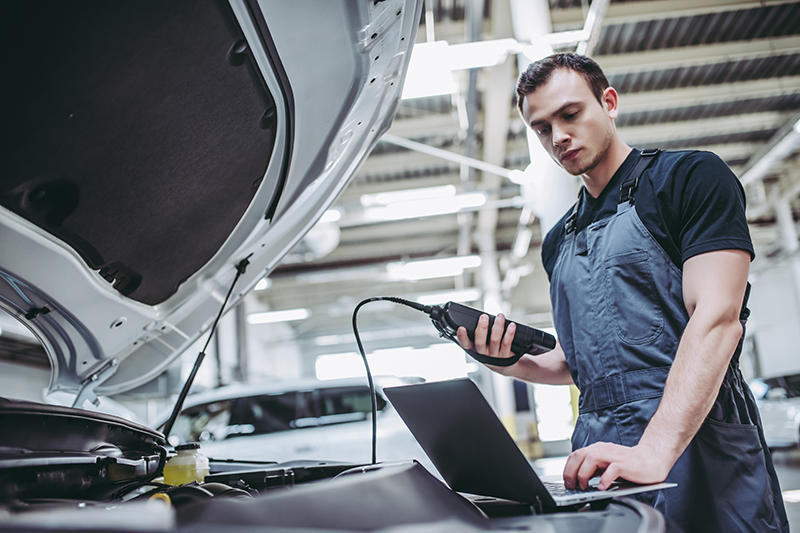Industry insights on skills needs
The Automotive IRC’s 2019 Skills Forecast ranks a list of generic skills in order of importance for each industry sector. The top five ranked generic skills for the Automotive Light Vehicle sector (inclusive of mass passenger vehicle manufacturing) are:
- Technology use and application
- Language, literacy and numeracy (LLN)
- Design mindset/Thinking critically/System thinking/Solving problems
- Science, technology, engineering and maths (STEM)
- Communication/Collaboration including virtual collaboration/Social intelligence.
In addition, the Automotive IRC’s 2019 Skills Forecast also ranked a list of generic skills in order of importance for the Automotive Heavy Vehicle sector (inclusive of heavy vehicle manufacturing):
- Language, literacy and numeracy (LLN)
- Science, technology, engineering and maths (STEM)
- Design mindset/Thinking critically/System thinking/Solving problems
- Learning agility/Information literacy/Intellectual autonomy and self-management
- Technology use and application.
The Automotive IRC’s 2019 Skills Forecast highlights expected increases in the demand for commercial vehicles, largely fuelled by forecast growth in mining and heavy industry construction along with growth in heavy vehicle transport. The final Motor Vehicle Census, relating to vehicles which were registered on 31st January 2021, finds that light rigid trucks have continued to have the largest growth rate in registrations, increasing 6.0%, followed by articulated trucks with 4.6%, and light commercial vehicle registrations increased by 3.3%, rising to 17.5% of the registered fleet. While major local passenger vehicle manufacturing ceased in Australia at end of 2017, there is still significant vehicle manufacturing continuing in Australia. IBISWorld states the largest vehicle manufacturers in Australia are now Volvo, PACCAR (Kenworth) and CNH Industrial Australia (IVECO), manufacturing trucks. However, IVECO has announced it will be moving to fully importing its range from the end of June 2022 and focus on customisation for the local market. The 2021 State of Electric Vehicles includes a list of four bus and seven commercial vehicle manufacturers that are producing electric vehicles in Australia.
The Australian Government Department of Defence land vehicle procurement program has several projects that involve the manufacture and assembly of components in Australia. For example, the Bushmaster Protected Mobility Vehicle and Hawkei are manufactured in Bendigo, Victoria, and 1,799 trailers for use with the G‑Wagons are being made in Rocklea, Queensland. Thales: Value and Impact Study of Australian Supply Chain states the company spent $157m on procurement for Protected Vehicles, and more than 1,500 small and medium enterprises comprised 82% of all Thales’s Australian suppliers in 2020. The Office of Defence Industry Support was officially launched 26 November 2021, which will be used by Defence and major contractors to find Australian solutions to capability challenges among small and medium businesses and help businesses enter the defence market. The government has also provided Sovereign Industrial Capability Priority (SICP) grants since 2018, enabling businesses to improve their manufacturing capabilities.
The New South Wales Government has released a strategy to replace its bus fleet with to zero emissions buses by 2030. The strategy includes an aim to meeting natural replacement needs in the 2021-22 calendar years while building industry readiness for an increased take up of vehicles from 2023, and a peak delivery of 1,200 to 1,300 buses in later years. The strategy also notes that while this may provide opportunities for local industry development, manufacturers may need to look to other markets including interstate and overseas, diversify manufacturing and product range to include other vehicle types or face periods of ramping-up and ramping-down production, with likely reduced demand for around 10 to 15 years between replacement cycles.
The findings of the Australian Automotive Industry Report, which presents an analysis of the outcomes for the automotive supply chain, indicate that of those businesses that participated in the Automotive Transition Scheme, about 75% remain in business, albeit with reduced workforces. For example, the data suggests that the increased activity in ‘other automotive’ manufacturing has provided some motor vehicle automotive firms an avenue for diversification, particularly into ‘body and trailer’ manufacturing. There are also a number of automotive supply chain companies that have diversified into truck component manufacturing.
